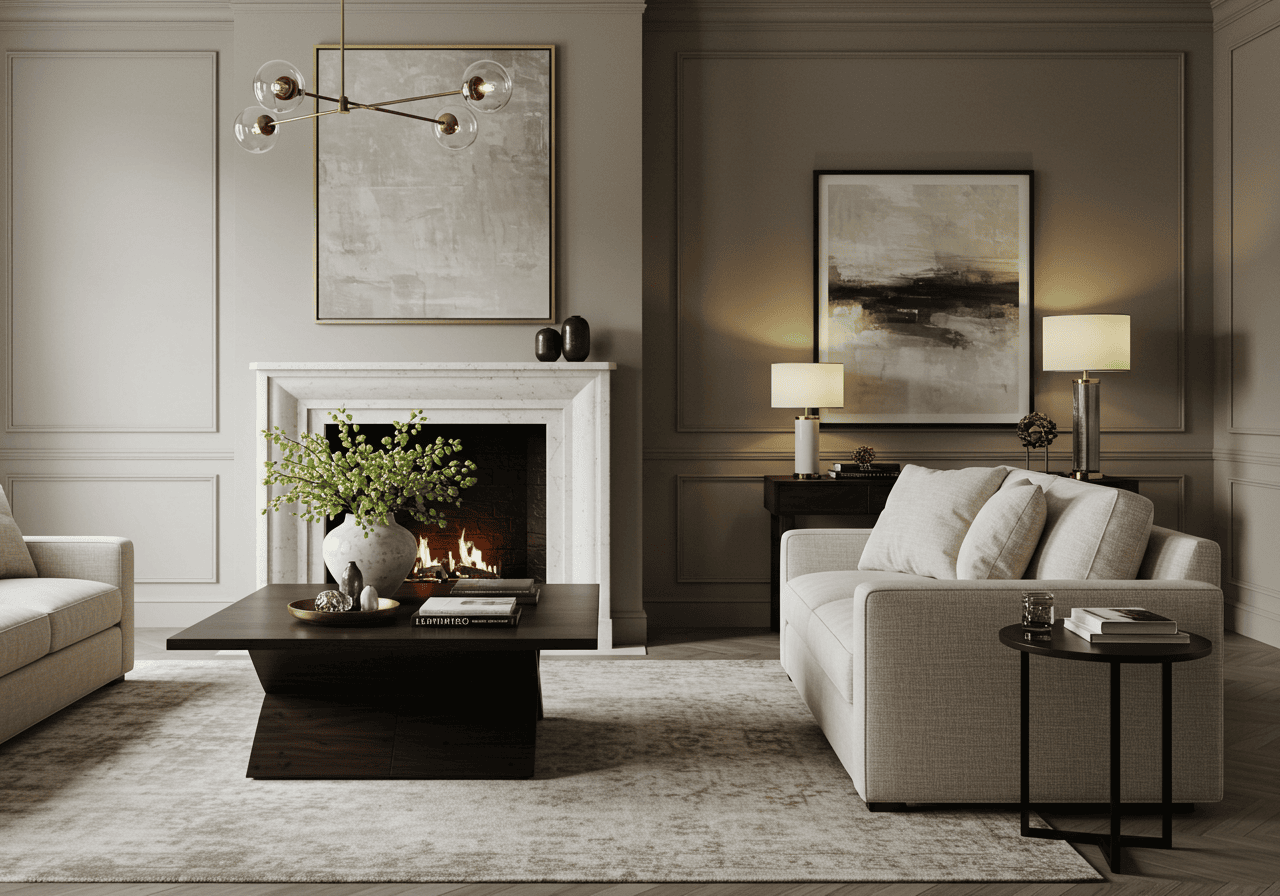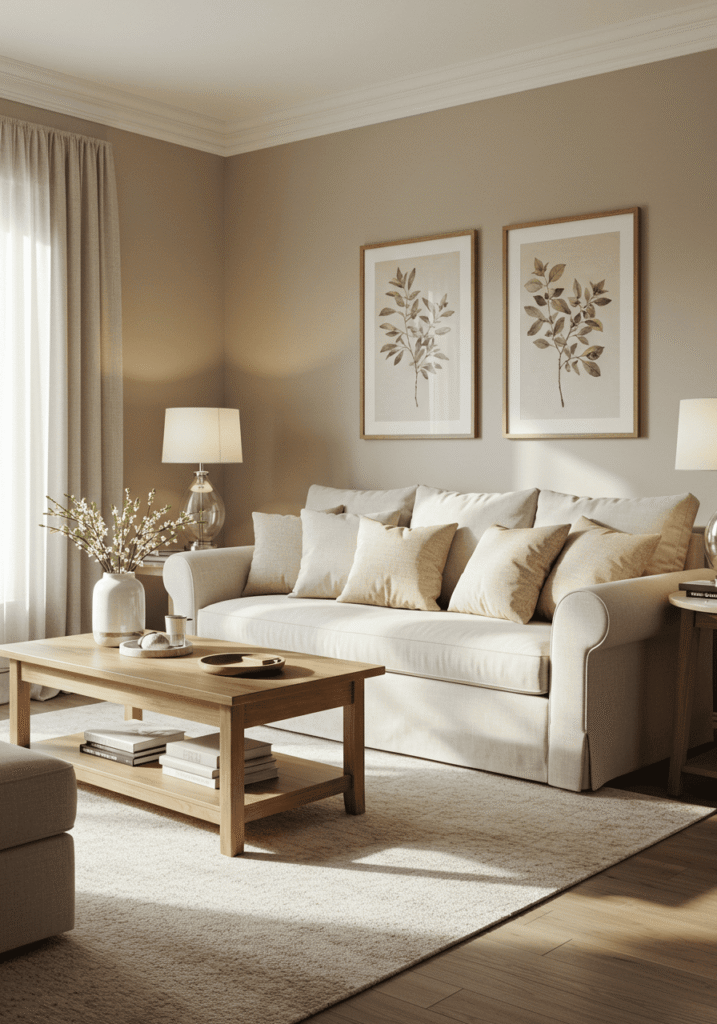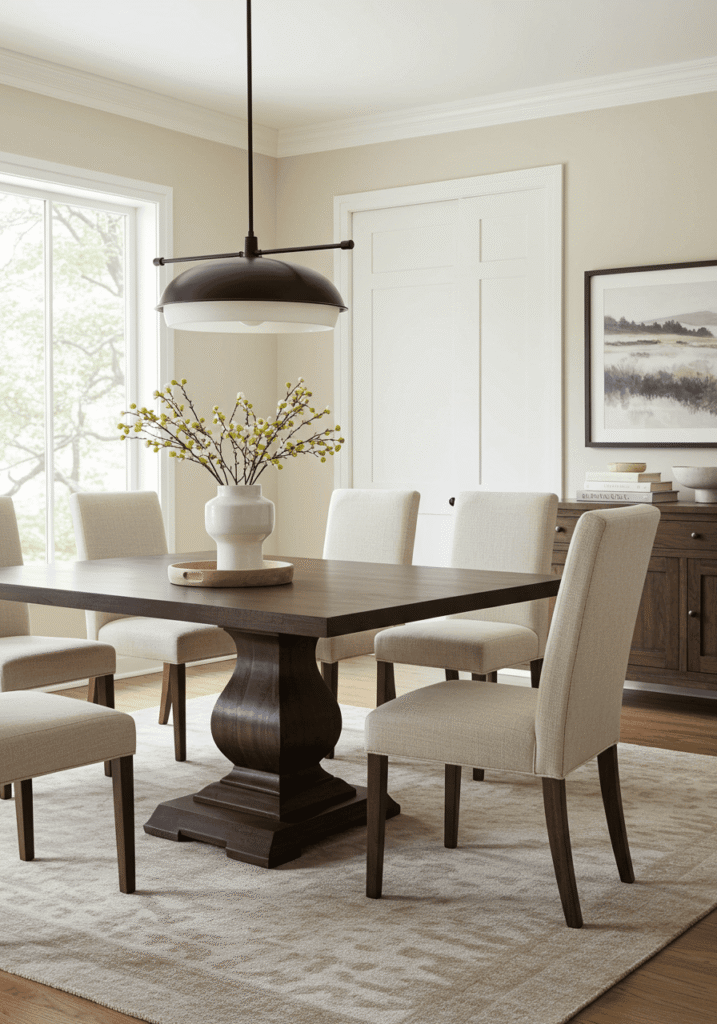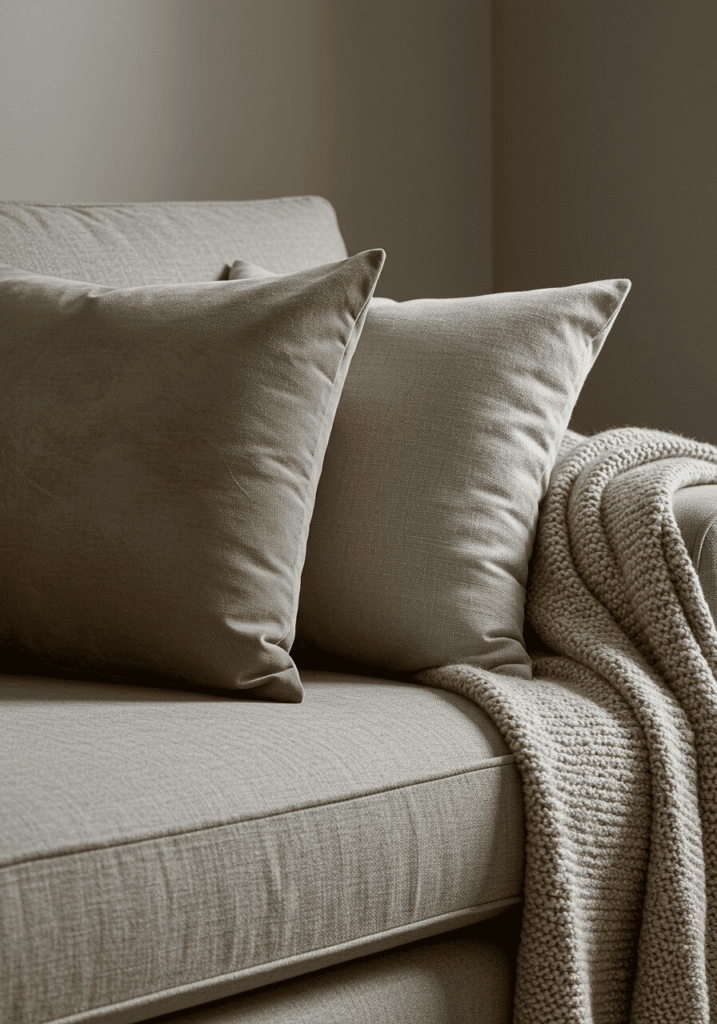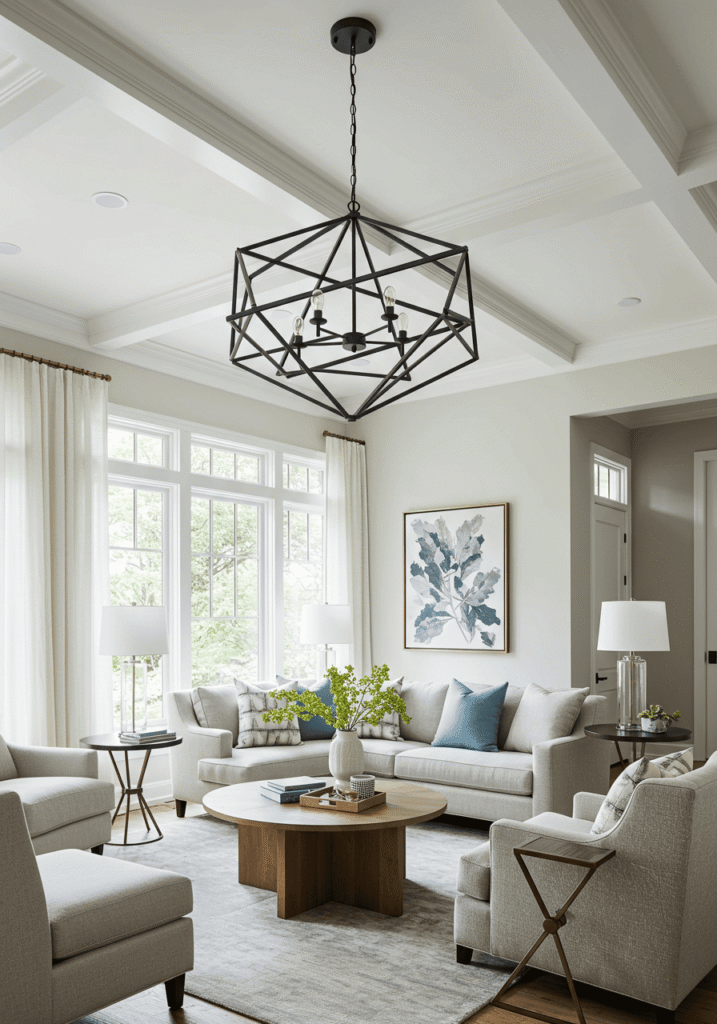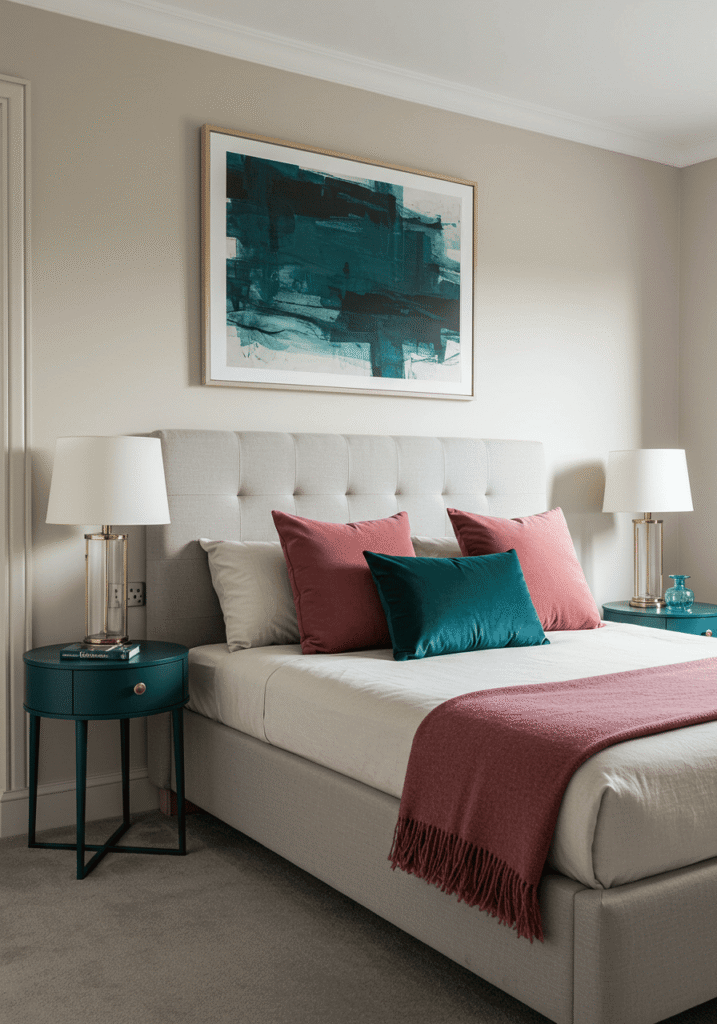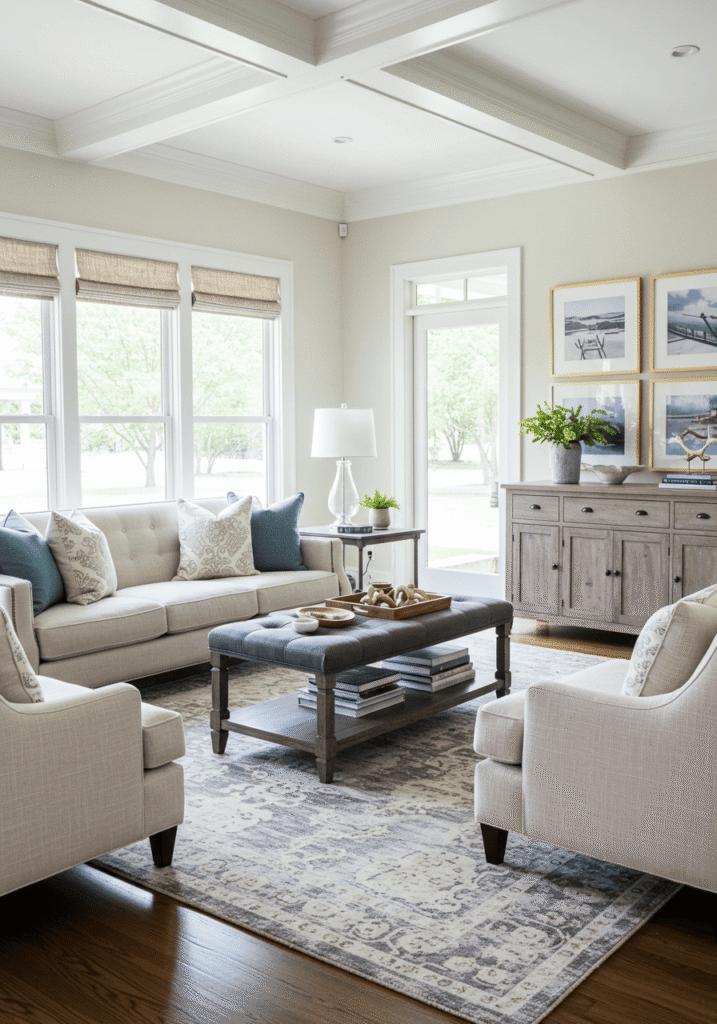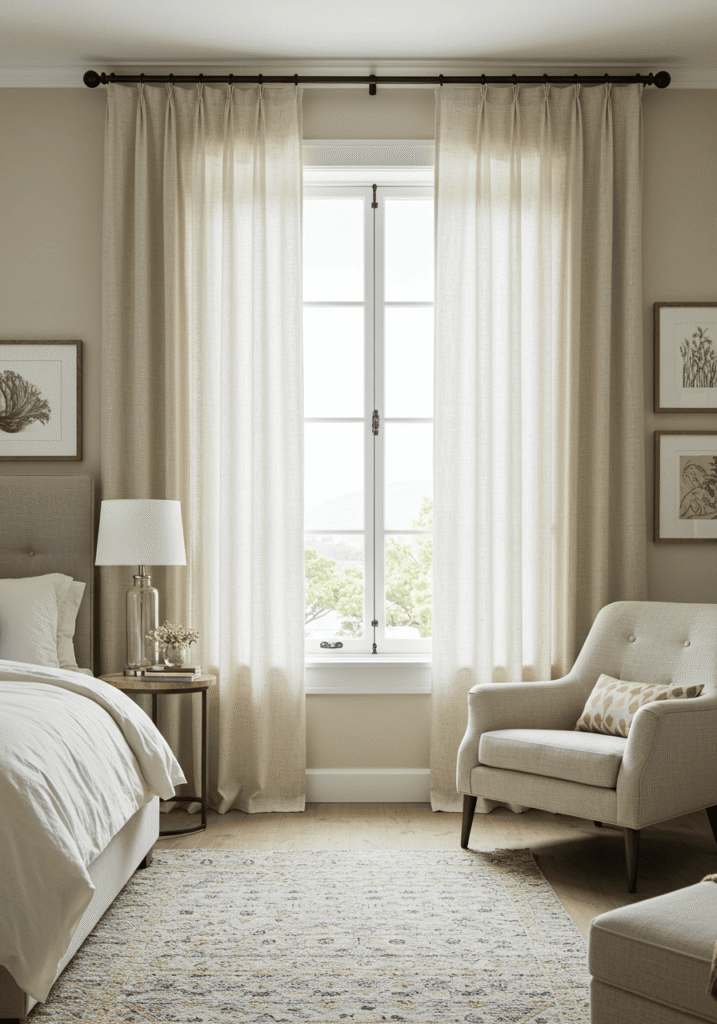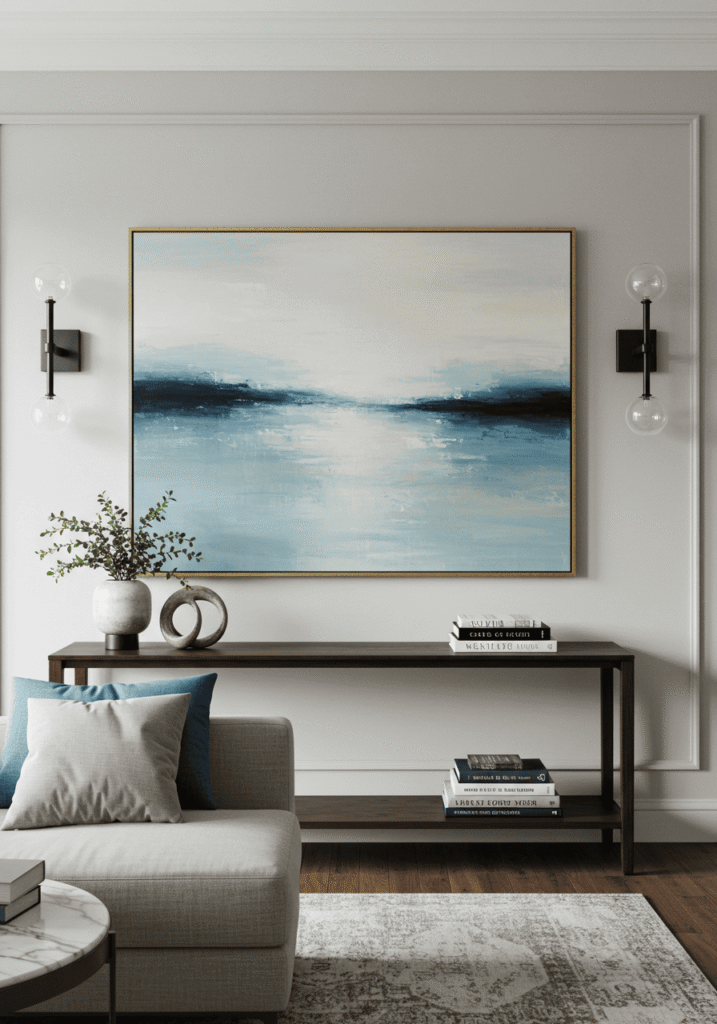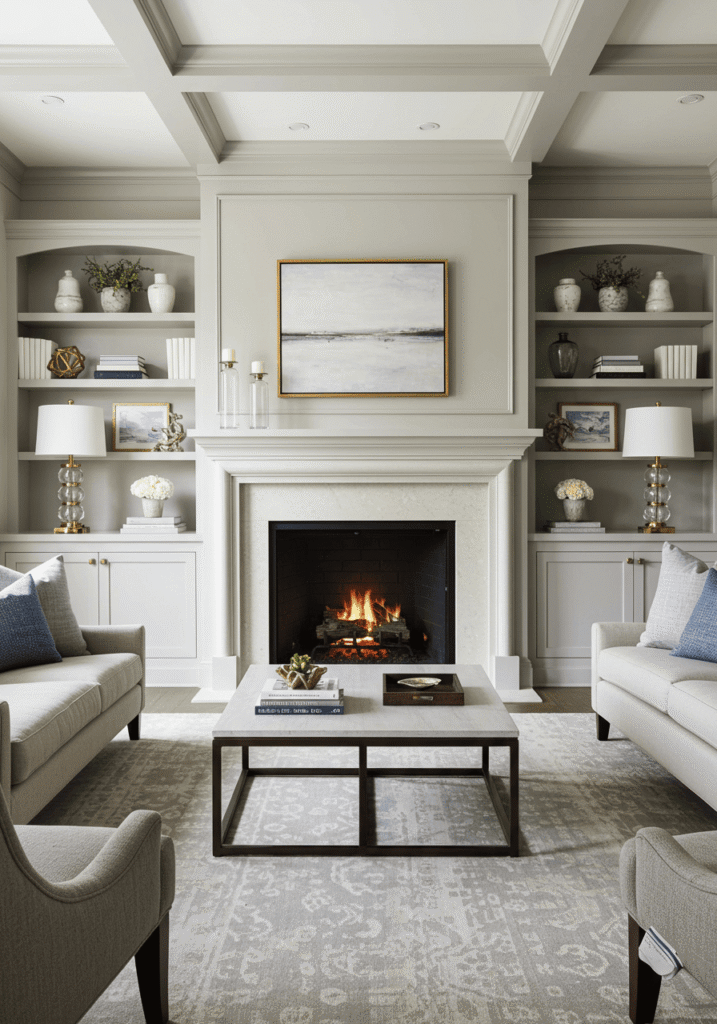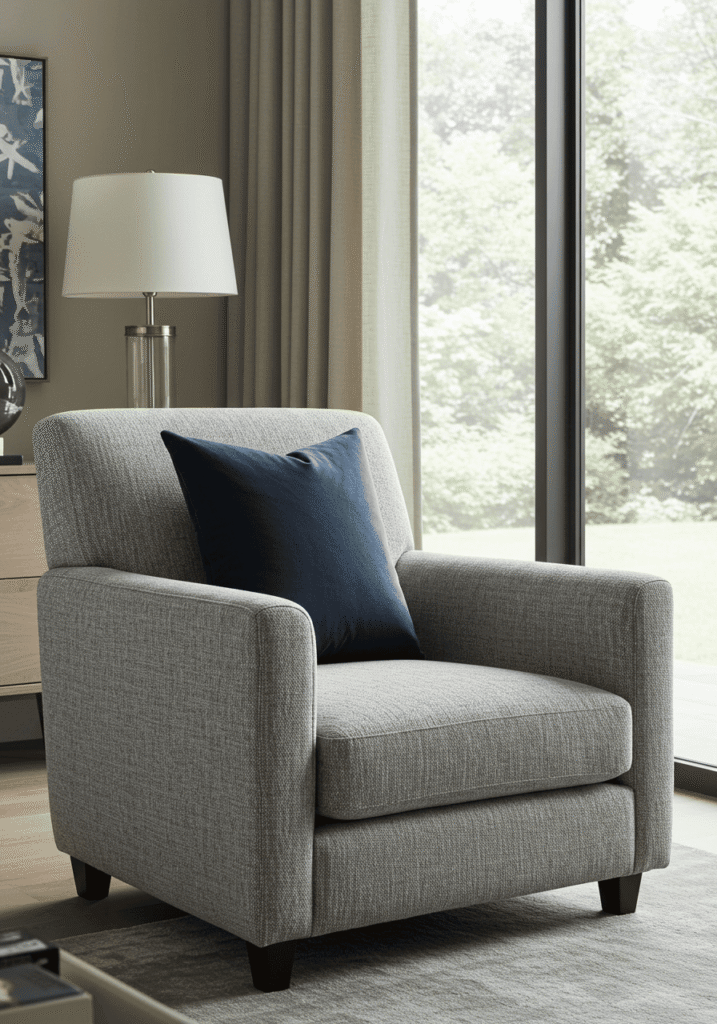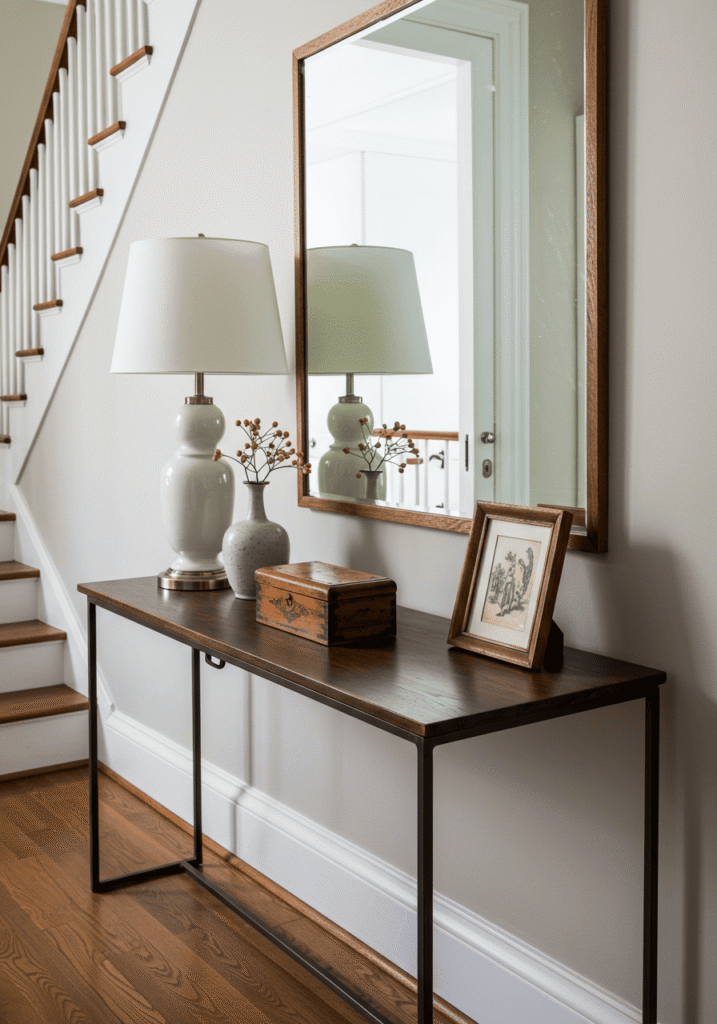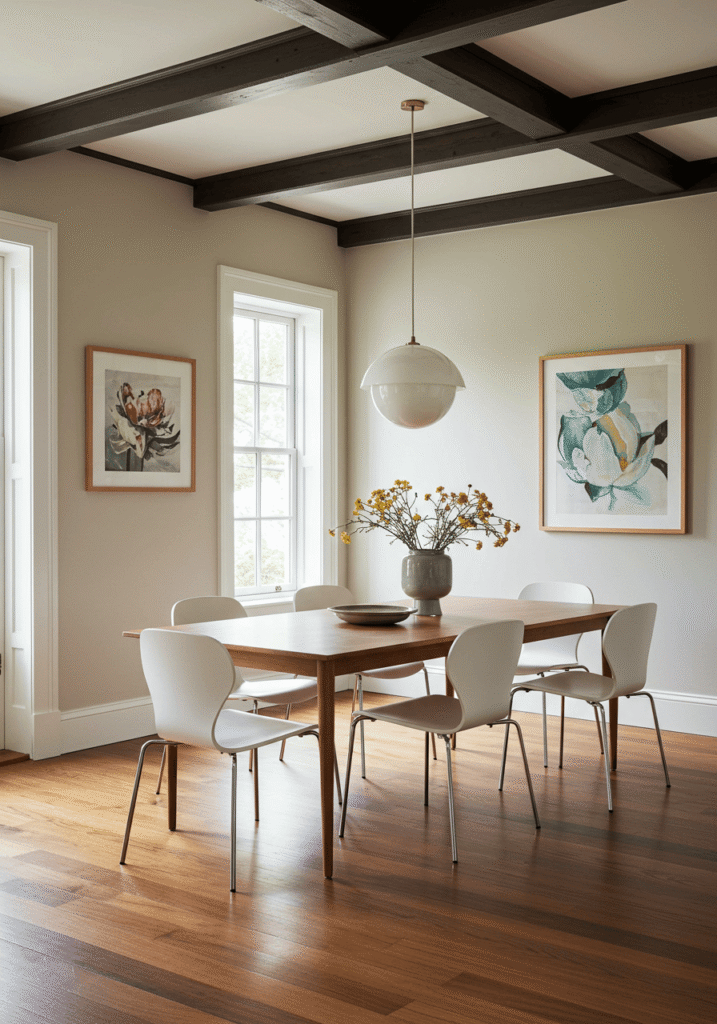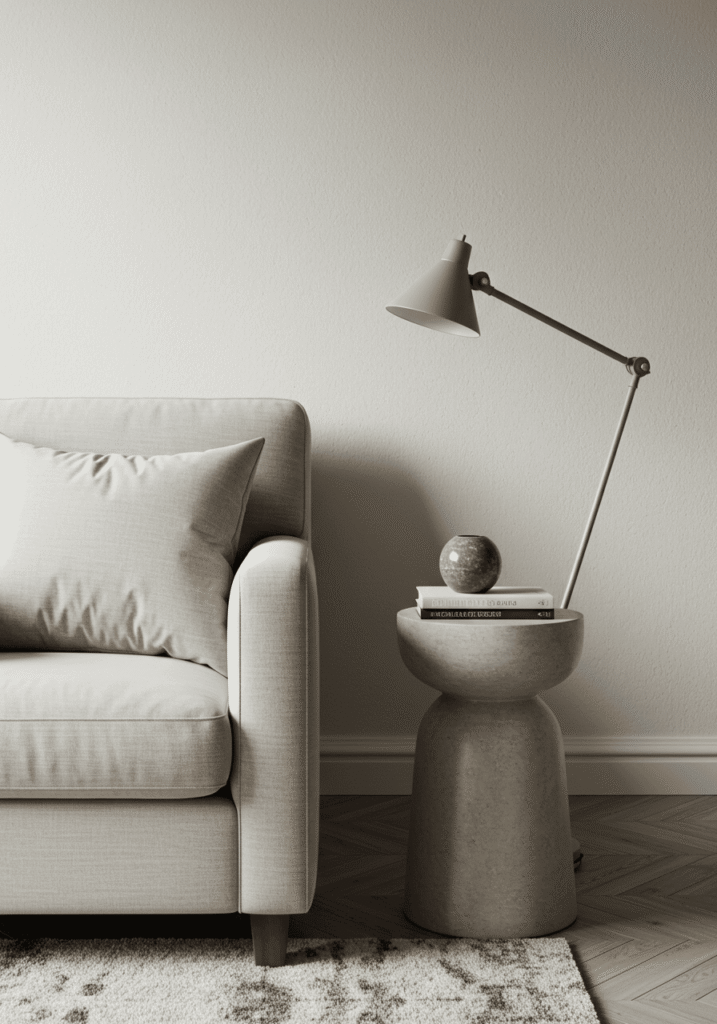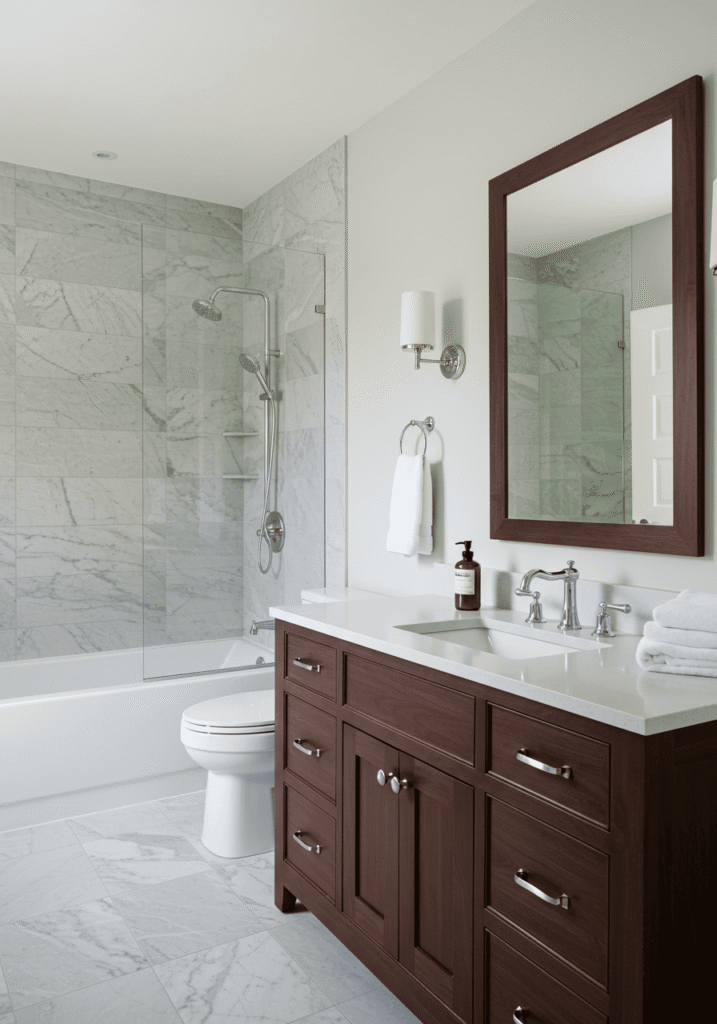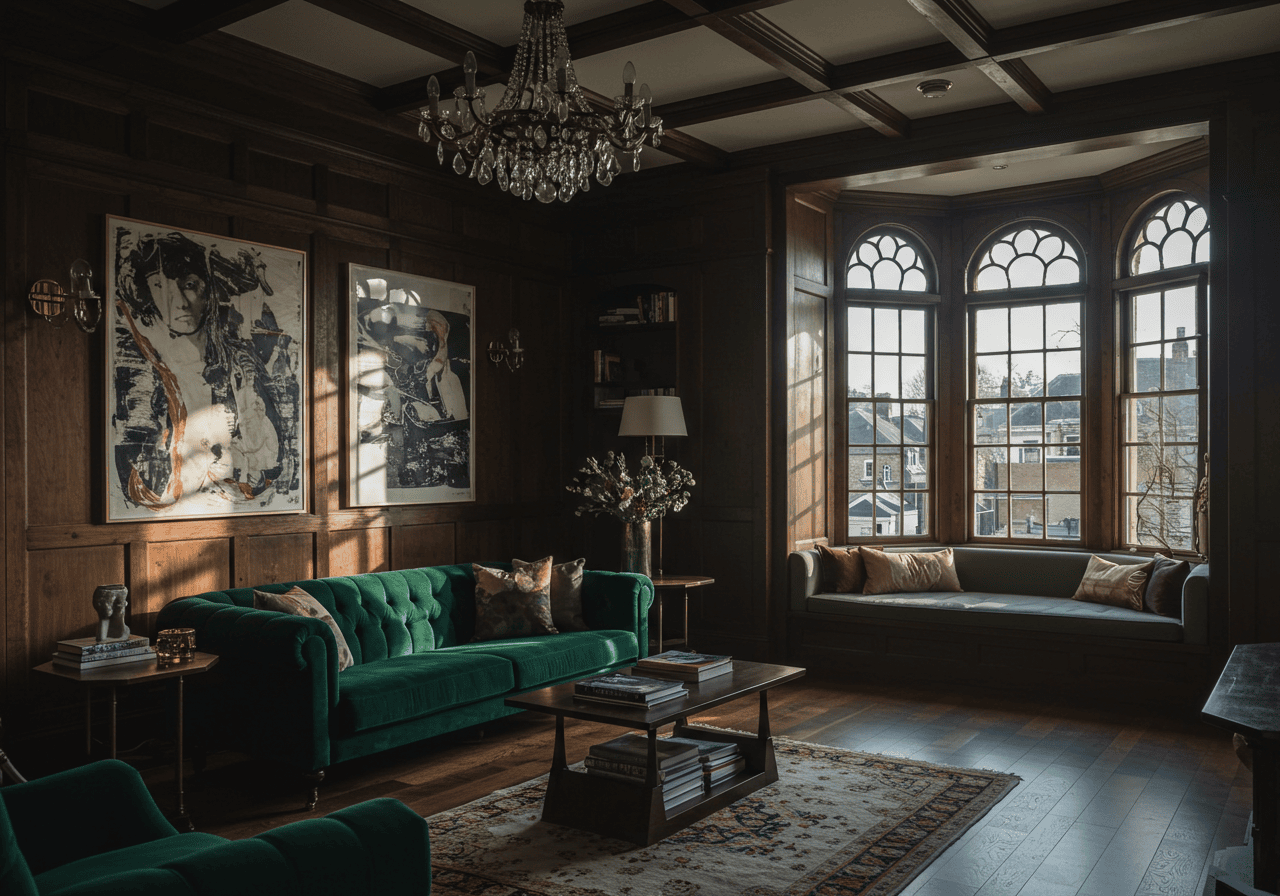Torn between timeless traditional and sleek contemporary design? Transitional decor is your perfect match! It masterfully blends the best of both, creating harmonious spaces that are comfortable, chic, classic, yet wonderfully current.
This beloved style is your canvas for a home that feels personal, inviting, and effortlessly stylish. Ready to transform your space? We’ve gathered 17 inspiring ideas to help you master the art of transitional decor. Let’s dive in!
Let’s Dive In: 17 Transitional Decor Ideas to Elevate Your Home
Here are the first five ways to get you started on your transitional design journey:
1. Embrace the Power of a Neutral Palette
The foundation of any stunning transitional space begins with its color scheme. Think of neutral colors as your sophisticated backdrop – they create a calm, cohesive, and airy feel that allows other design elements to truly shine.
- Why it works: Shades like warm grays (greige is a superstar here!), creamy whites, soft beiges, and even muted taupes provide a serene canvas. This allows the lines of your furniture and the richness of textures to take center stage.
- Expert Tip: Layering is key! Don’t just pick one neutral; use varying shades and tones of the same color family to add depth and visual interest. For a bold yet classic approach, consider elements from a black and white aesthetic, then soften it with warmer neutrals and textures for that signature transitional balance.
2. The Artful Blend: Marrying Traditional & Modern Furniture
This is where the magic of transitional decor truly comes alive! The goal is to curate a collection of furniture where classic silhouettes meet modern sensibilities.
- How to do it: Imagine a sofa with traditional, comfortable curves upholstered in a contemporary, neutral fabric. Or, pair a classic wooden dining table with sleek, modern chairs. The key is balance – you don’t want one style to completely overpower the other.
- Expert Tip: Look for pieces that share a common element, like a color, material, or even a subtle design line (curved or straight), to ensure they “talk” to each other. For instance, incorporating a beautifully crafted piece with clean lines, perhaps inspired by Mid-Century Modern decor, can add a touch of iconic modernism alongside more traditional forms.
3. Texture, Texture, Texture! Layer for Lived-In Luxury
A neutral palette is beautiful, but without texture, it can feel a bit flat. Transitional design thrives on a rich interplay of textures to add warmth, depth, and a tactile sense of luxury.
- Why it’s essential: Think plush velvets, soft linens, chunky knits, smooth leathers, warm woods, and cool metals. These elements engage the senses and make a space feel inviting and thoughtfully curated.
- Expert Tip: Mix and match! Drape a nubby knit throw over a smooth leather armchair, place a sleek metal tray on a weathered wood coffee table, or lay a soft, high-pile rug on hardwood floors. For inspiration on incorporating natural, touchable materials, you might even draw subtle cues from the appealing textures found in rustic home decor, refined to fit the more polished transitional vibe.
4. Let There Be (Statement) Light!
Lighting in transitional design isn’t just functional; it’s a fantastic opportunity to make a stylish statement and lean into the “modern” side of the traditional-modern blend.
- The impact: Well-chosen light fixtures can act as jewelry for your room, adding a touch of glamour or contemporary edge. Think sculptural pendants, elegant chandeliers with clean lines, or striking floor lamps.
- Expert Tip: Opt for fixtures that are eye-catching but not overly ornate or fussy. Brushed metals like satin brass or matte black are popular choices. Don’t be afraid to go a bit bold with scale, especially in dining rooms or entryways. Some of the most memorable lighting, like those found in striking Art Deco interior design, often feature strong geometric shapes and a sense of drama that can be wonderfully adapted to a transitional setting if chosen carefully.
5. Strategic Color Accents: A Pop of Personality
While the overall palette remains neutral and serene, transitional design welcomes thoughtful pops of color to inject personality and prevent the space from feeling too monochrome.
- How to add color: Introduce accent colors through accessories like throw pillows, artwork, rugs, vases, or even a single statement piece of furniture like an armchair.
- Expert Tip: Choose one or two accent colors and use them sparingly but intentionally, repeating them in small doses throughout the room for cohesion. Muted blues, soft greens, rich jewel tones, or even a sophisticated blush can work beautifully. If you’re considering a softer touch, exploring how to integrate shades like a dusty rose can add warmth, and you can find ideas for this in pink room decor guides, adapting the intensity for a transitional feel.
6. Accessorize with Intention & Personality
In transitional design, accessories are like the carefully chosen jewelry that completes an outfit – they should enhance, not overwhelm. The key is curation and intentionality.
- Why it works: Thoughtfully selected accessories add layers of personality and visual interest without creating clutter. This approach ensures your space feels collected and personal, rather than staged or generic.
- Expert Tip: Opt for a “less is more” philosophy. Choose a few high-impact pieces that you truly love – perhaps a unique sculpture, a set of elegant vases, or a curated collection of books. While distinct from the bold approach of eclectic home decor which often celebrates a wider mix, transitional accessories share that same spirit of choosing items with meaning and aesthetic appeal that contribute to a cohesive story.
7. Rugs that Anchor, Unify, and Add Comfort
Never underestimate the power of a good area rug in transitional interiors! They are foundational pieces that can define a space, tie different furniture elements together, and inject a serious dose of warmth and texture.
- The role of rugs: In an open-plan living area, a rug can clearly delineate the seating zone from the dining space. In a bedroom, it adds a soft landing underfoot. They also provide an opportunity to subtly introduce pattern or a deeper shade of your neutral palette.
- Expert Tip: Size is crucial! For a living room, ensure at least the front legs of your sofa and chairs are on the rug. For dining rooms, the rug should be large enough so that chairs remain on it even when pulled out. Opt for subtle patterns, rich solid colors, or textures like wool, sisal, or a low-pile plush. For a slightly more relaxed, yet still sophisticated feel, you might draw inspiration from the grounded textures found in refined rustic farmhouse decor, choosing pieces with understated elegance.
8. Elegant Window Treatments: Frame the View, Don’t Hide It
Window treatments in transitional design are all about softness, simplicity, and functionality. They should frame your windows beautifully and control light without being overly fussy or ornate.
- What to choose: Think simple drapery panels in solid neutral colors or with very subtle patterns, elegant Roman shades, or perhaps woven wood blinds for a touch of natural texture. The goal is to complement the room, not compete with it.
- Expert Tip: Avoid heavy, elaborate valances, swags, or overly embellished fabrics. Layering is a great option – for example, combining sheer curtains for diffused light during the day with more opaque panels for privacy at night. Ensure drapes are hung high and wide to maximize the sense of height and light.
9. Embrace Gentle Curves & Softened Silhouettes
While contemporary design often champions sharp lines and angles, transitional style beautifully incorporates gentle curves and softened silhouettes to create a more inviting and comfortable atmosphere.
- Why curves work: Rounded edges on furniture, arched mirrors, or subtly curved architectural details can break up the monotony of straight lines, adding a touch of traditional grace and fluidity to modern forms.
- Expert Tip: Look for sofas with slightly rounded arms, coffee tables with soft corners, or dining chairs with curved backs. An arched floor lamp or a round accent table can also introduce this element. This appreciation for graceful curves can even find subtle echoes in the elegant arches of Mediterranean interior design, reinterpreted with the cleaner, more understated lens of transitional style.
10. Curated Artwork that Speaks Volumes
Art is far more than just a wall-filler in transitional design; it’s a powerful tool to bridge styles, inject personality, and serve as a focal point. Don’t let it be an afterthought!
- Why it’s impactful: The right artwork can tie together the traditional and modern elements in your room, reflecting your personal taste and elevating the entire space.
- Expert Tip: Choose pieces that genuinely resonate with you. This could be a large abstract canvas with a soothing color palette, a gallery wall of mixed-style prints in cohesive frames, or sophisticated black and white photography. While transitional design avoids the sheer volume and eclectic mix often seen in maximalism home decor, it deeply values art that makes a thoughtful, curated statement and unifies the room’s aesthetic.
11. The Importance of Scale & Proportion
Getting the scale and proportion of your furniture and decor right is absolutely critical in creating a harmonious transitional space. It’s all about visual balance.
- Why it matters: Pieces that are too large can overwhelm a room, while items that are too small can get lost and make the space feel unfinished. Transitional design aims for a comfortable, “just right” feeling.
- Expert Tip: Before buying major pieces, consider the size of your room. Avoid overly bulky, heavy traditional furniture if it cramps the space, or tiny, minimalist modern items if they look insignificant. Aim for pieces that feel substantial yet elegant, and ensure there’s enough “breathing room” around them.
12. Create Calm with Symmetry & Balance
A hallmark of transitional design is its inherent sense of order and calm, often achieved through the thoughtful use of symmetry and visual balance. This doesn’t mean every single item needs a perfect mirror image, but rather that the overall arrangement feels harmonious and intentional.
- Why it creates harmony: Symmetrical arrangements are naturally pleasing to the eye and create a feeling of stability and restfulness. Think of a fireplace flanked by identical bookcases, a sofa with matching end tables and lamps, or a bed with symmetrical nightstands.
- Expert Tip: Even if you don’t have perfectly matched pairs, you can achieve balance by distributing visual weight. For instance, a large armchair on one side of a sofa can be balanced by two smaller chairs or a substantial floor lamp on the other. The goal is a composition that feels grounded and thoughtfully composed, not starkly rigid.
13. Timeless Patterns, Modern Application
Patterns can certainly have a place in transitional design, but the key is to choose timeless patterns and apply them in a contemporary way.
- How to approach patterns: Think subtle geometrics, understated stripes, simplified florals, or classic patterns like herringbone or Greek key. The goal is elegance, not boldness that shouts for attention.
- Expert Tip: Use these patterns in updated, often neutral or muted, colorways. Apply them to accent pieces like throw pillows, an area rug, drapery, or the upholstery on a single accent chair. Avoid mixing too many competing patterns; one or two well-chosen ones are usually sufficient.
14. Incorporate Pieces with Patina (Subtly!)
A touch of age or history can add wonderful depth, character, and a “collected over time” feel to your transitional space, preventing it from feeling too new or sterile.
- Why it adds charm: Pieces with a subtle patina tell a story and can provide a beautiful contrast to newer, more contemporary items.
- Expert Tip: This isn’t about going full shabby chic with heavily distressed paint and an abundance of vintage finds. Instead, think of a beautifully aged wooden chest used as a side table, a vintage-inspired mirror with a subtly weathered frame, or antique brass hardware on a modern cabinet. These elements should be accents, chosen for their unique character and carefully balanced by sleeker, more polished pieces to maintain overall sophistication.
15. Highlight Architectural Details & Natural Wood
If your home is blessed with interesting architectural features like crown molding, ceiling beams, beautiful windows, or rich wood floors, let these elements shine as integral parts of your transitional design.
- Leveraging existing character: These built-in features often provide a perfect blend of traditional charm and structural interest that transitional style loves.
- Expert Tip: Keep original architectural details clean, well-maintained, and consider painting them in a way that either makes them stand out subtly or blend harmoniously. Natural wood tones, from light, airy oak to deep, rich walnut, are foundational in transitional spaces. If you’re renovating, consider incorporating elements like beautifully finished exposed beams or classic wainscoting, which can evoke the structural honesty and warmth found in a thoughtfully designed barn style house, but ensure they are refined and integrate seamlessly with the overall sophisticated aesthetic of your transitional interior.
16. Introduce a Sculptural, Modern Accent
Don’t be afraid to introduce a single, striking piece with a strong modern or even a hint of an industrial or minimalist feel. This can act as a fascinating counterpoint to softer, more traditional elements, adding an unexpected edge.
- The power of contrast: Such a piece can become a conversation starter and highlight the thoughtful blending inherent in transitional style.
- Expert Tip: Think of a side table made from concrete or raw metal, a floor lamp with a distinctly sculptural, minimalist form, or an open-shelving unit with clean, sharp lines. This isn’t about creating a stark brutalist interior design scheme, but rather borrowing a single, bold yet refined element to add an artistic touch and showcase your confidence in mixing styles. It’s all about creating a focal point through confident contrast.
17. Extend Transitional Style to Your Bathroom
Your bathroom deserves the same thoughtful design attention as the rest of your home! The principles of transitional decor – balance, neutral palettes, quality materials, and a sophisticated blend of classic and modern – work beautifully in this essential space.
- Creating a serene retreat: A transitional bathroom can feel like a spa-like oasis, both functional and beautiful.
- Expert Tip: Consider classic tile choices like subway or marble (perhaps in a contemporary layout like a herringbone floor) paired with a modern, floating vanity or sleek fixtures. Alternatively, a vintage-inspired freestanding tub can be a stunning focal point when contrasted with clean-lined cabinetry. For specific inspiration on blending clean lines with timeless appeal, look at how elements of mid-century modern bathroom design can be adapted – focusing on simple forms, quality materials, and uncluttered functionality – then layer in softer, more traditional touches like plush, high-quality towels, elegant hardware, or a classic framed mirror.
Your Home, Beautifully Balanced: The Transitional Takeaway
And there you have it – your guide to the effortlessly chic world of transitional decor! This sophisticated style is all about creating that perfect blend of classic elegance and modern comfort.
By embracing neutral foundations, mixing furniture styles, layering textures, and choosing accessories with heart, you can design a home that’s both timeless and uniquely you. Transitional decor isn’t about rigid rules; it’s about crafting spaces that feel collected, comfortable, and undeniably stylish.
So, go ahead – experiment, blend, and create a sanctuary that beautifully balances the best of both worlds. Happy decorating!

